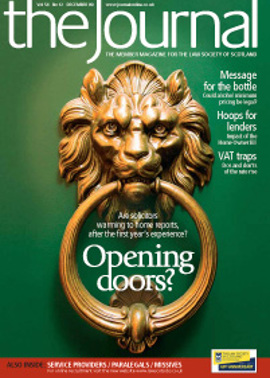Ready for the VAT rise?

It is just a year since the Government rushed through, in a matter of days, a reduction in the VAT rate to 15%. We were told that this would stimulate the economy. Whether it did or not is one for the political commentators; but the 13 month temporary reduction is now almost at an end and we must prepare ourselves for a return to 17.5% VAT on 1 January 2010.
The advantage this time is that we have had time to prepare and to look for the opportunities this increase may present. The disadvantage, apart from the obvious extra 2.5% we will all now pay, is that an increase presents rather more pitfalls for business than a reduction. HMRC tell us they will take a “light touch” to errors resulting from the increase. We shall see…
What are the practicalities?
The first and most important thing to remember is the tax point rules, and that a tax point is the date on which VAT is calculated.
There are two tax points, the basic tax point and the actual tax point.
The basic tax point is created when goods are delivered or change hands and when a service is performed. However, the basic tax point is overridden by an actual tax point, which happens when money is received prior to the basic tax point or when an invoice is issued up to 14 days after the basic tax point. In simple terms, money comes first, then the supply of goods or services, and finally the invoice.
There is a concession at the time of a rate increase which allows the basic tax point to be used as the relevant date if the issue of an invoice would result in the higher rate of VAT being charged.
Putting this into a practical example, if I order a new car on 20 December but don’t take delivery until New Year, when I receive an invoice on the date of delivery, I will pay VAT at 17.5%. If, however, I receive an invoice before 31 December or pay before that date, the VAT payable will only be 15%.
If (unlikely I know) I take delivery of my car on 31 December but don’t receive an invoice or pay any money until New Year, the car dealer has the option to charge 17.5% based on the invoice date, or 15% because I took delivery of the car and so received the goods when the VAT rate was 15%.
This presents some opportunities for cashflow boosting; but before we get to that, back to a few practicalities.
Some businesses have pointed out that a change of rate at a minute past midnight on the busiest night of the year is a nonsense, and so the Government has agreed a concession for those retailers operating point of sale retail schemes who are open at midnight on 31 December. For them the VAT rate remains at 15% until the end of their 31 December trading session or at 6am on 1 January 2010, whichever comes first.
The group facing some of the trickiest of problems are those businesses who make continuous supplies of services, and so issue applications for payment rather than invoices. This broadly encompasses landlords, the construction industry and professional practices – lawyers and accountants largely. For us, the problem is that we have no basic tax point and our application for payment does not create any tax point, so that, if we issue an application at 15% but don’t get paid until 2010 when our invoice is generated by receipt of payment, we have to account for VAT at 17.5% and not the 15% we requested from our client. Where the timespan of the service to which the invoice relates is clear, such as a rent invoice, we are allowed to apportion the VAT between the element of time at 15% and the remainder at 17.5%, but for most true continuous services, this is difficult and time consuming to establish and, moreover, to prove.
Where’s the good news?
Simply, it’s all about cashflow and using this as an opportunity to give it a boost. Any private individual or business that cannot claim back all of the VAT it pays out will want to avoid the extra 2.5% cost, and although this may amount to relatively little, with interest rates being so low an invitation to pay in advance is more tempting.
There is anti-forestalling legislation to prevent serious misuse of this opportunity, but this only kicks in under specific circumstances and if the customer is unable to reclaim all of the VAT charged. Where this is the case, it’s still only an issue if there is advance invoicing or payment exceeding £100,000, credit terms of more than six months, connected parties, or co-financing of the purchase. Even then, a defence of normal commercial practice could still allow the transaction at 15%.
Where the anti-forestalling legislation is breached, the 15% VAT rate still applies to the pre-31 December tax point but an additional 2.5% becomes immediately payable on 1 January. Although I envisage the imposition of this being limited, the new penalty regime could make this an expensive move and I warn caution to anybody who thinks they might be caught by the anti-forestalling rules.
Finally, let’s look on the bright side again and consider that we may be only six months or so away from another VAT rate increase. Never mind the extra cost that 20% VAT would bring: after three rate changes in about 18 months we will all be experts.
Debra Dougal is a VAT partner at Haslers, chartered accountants, Essex, and a member of UK200Group Tax Panel. e: debra.dougal@haslers.com
In this issue
- Home reports have devastated the Scottish house market
- Review of the Fatal Accident Inquiry Legislation
- The Gill Review: a personal injury practitioner’s perspective
- A tale for our times
- A step too far?
- Report card
- Down the slipway
- Homing instinct
- Bottle for a contest
- Ready for the VAT rise?
- New website to promote training openings
- First solicitor advocates approved as "senior"
- Your feedback
- The very definition of paralegal
- Law reform update
- Lawyers can network too
- Ask Ash
- Welcome, user! (and you're sued)
- Communication, communication, communication
- Keeping the peace
- On the mark?
- Crown disclosure: the next level
- Tackling improvements
- Camera angles
- Cutting red tape in Europe
- Scottish Solicitors' Discipline Tribunal
- Website review
- Book reviews
- Calling the shots
- Sector "rising to challenge": Millar
- "One size" is a dodgy fit
- BSA brings in standard instructions
- A new burden is born






